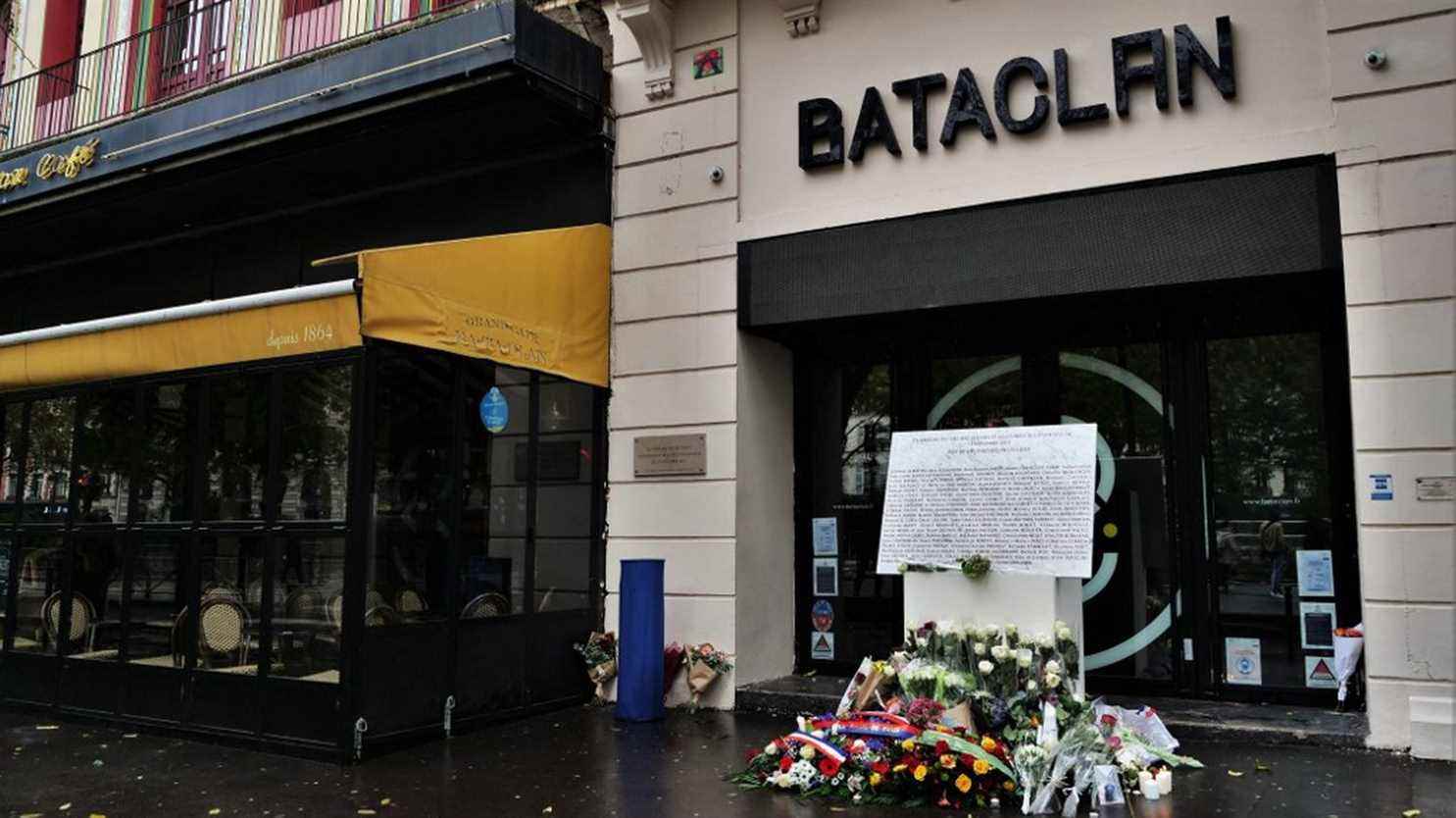“I didn’t think there would be a debate.” A little embarrassed, Jean-Marc Delas, lawyer for the Life for Paris association, came to the bar on Thursday, March 31, before the special assize court in Paris. He came to plead the request of the association of victims who wish to broadcast, to trial of the November 13 attacks, three sound clips from a dictaphone left on during the Bataclan attacks and around fifty photos from inside the concert hall.
The civil parties were divided on the subject. Yet, recalled Jean-Marc Delas, “there is no assize trial in which the scenes that are at the heart of the subject are not shown, even if it is painful, morbid, dreadful”. But bereaved families fear the dignity of their loved ones will be harmed “and do not want to be shown in an unsustainable position”insisted Aude Rimailho, lawyer for civil parties.
Same observation for Jean Reinhardt, lawyer for the association 13Onze15, who accompanies more than 100 civil parties, very divided on the question. Some are “for-for, others for-against, and others against-for”, he summed up with a touch of humor. He especially fears the reactivation of traumas. Two sound clips from the same dictaphone were broadcast at the start of the trial. One of them provoked in a victim, who followed the hearings on the web radio, “a deep psychological shock”, so much so that she had to resume “EMDR sessions [une technique de thérapie], went back to the shrink and stopped all contact with the trial”.
This nearly two-hour debate once again shows the “non-standard” aspect of this trial, during which we have still not seen any photos from inside the Bataclan, even though it is the main crime scene: 90 people died there out of a total of 130 victims. All the more strange that the photos of the terraces have been projected during previous hearings.
But the precautions taken vis-à-vis the victims, faced with the horror vision of the bodies piled up in the pit, have taken precedence so far over this broadcast, which lawyer Cosima Ouhioun regrets, who finds “infantilizing” to think that his two clients, survivors of the Bataclan, would not be able to face these visual and sound elements. “If the court decides to broadcast, it will leave the choice to the victims to see or not to see. To choose not to broadcast is to give them none”summarizes his colleague Daphné Pugliesi.
Camille Hennetier, General Counsel of the National Anti-Terrorist Prosecutor’s Office (Pnat), points out the risks of capturing images or the soundtrack during the hearings, which would be “inconceivable for the victims”, insists Aude Rimalho. The lawyer represents the parents of a 30-year-old young woman, who died at the Bataclan, who oppose the broadcast of the sound recording “because they don’t want us to hear their daughter’s last moments”.
But most of the lawyers who spoke on Thursday afternoon were very favorable to the dissemination of these various elements. “We know it will be an ordeal within an ordeal, but it is inconceivable, over ten months of trial, that the crimes committed will not be shown”launched Géraldine Berger-Stenger, representative of the French Association of Victims of Terrorism (AFVT). “We don’t want a sanitized audience.”
Several of his brothers and sisters insist on the need not to water down the trial. “We can’t do without this fragment of reality that is a sound recording. Sometimes, violence, you have to see it, to have something other than an imaginary or symbolic reconstruction”argued Véronique Truong, lawyer for two survivors of the Bataclan.
His colleague Méhana Mouhou recalled that the same questions arose during the trial of the Toulouse attacks in 2017. In the first instance, it was decided not to show the images from the GoPro of Mohammed Merah, who had filmed his killings. The same questions will arise in September, for the trial of the Nice attacks, he recalled. What will it be necessary to show of the passage of “this truck that shredded whole bodies” ? “Your decision is going to be important, Mr. President”, warned the lawyer before the adjournment, Thursday, late afternoon.
After a deliberation of about thirty minutes, Jean-Louis Périès decided: the photographs and the sound extracts will be broadcast this Friday, at the start of the hearing. The president assures that the precautionary measures will be reinforced to avoid leaks and called on the gendarmes to be very vigilant so that photos are not taken.
